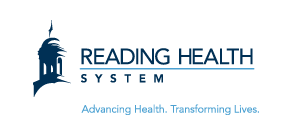Safety of Oral Anticoagulants Registry
| Status: | Recruiting |
|---|---|
| Healthy: | No |
| Age Range: | 18 - Any |
| Updated: | 5/24/2018 |
| Start Date: | August 2016 |
| End Date: | October 2018 |
| Contact: | Charles V Pollack, MD |
| Email: | soar.registry@gmail.com |
Safety of Oral Anticoagulants Registry (SOAR): A National, Hospital-Based, Sentinel Surveillance Study of the Clinical and Economic Impact of Bleeding and Bleeding Concerns Due to the Use of Oral Anticoagulants
The goal of SOAR is to characterize the clinical and economic impact of clinicians' responses
to major bleeding complications and pre-procedural concerns for bleeding risk in patients
treated with oral anticoagulants (warfarin, anti-Xa orals, and anti-thrombin (IIa) orals) who
present to the ED or in the hospital with acute illness or injury, with the eventual aim of
informing the development of improved approaches to the management of OACs in the ED.
to major bleeding complications and pre-procedural concerns for bleeding risk in patients
treated with oral anticoagulants (warfarin, anti-Xa orals, and anti-thrombin (IIa) orals) who
present to the ED or in the hospital with acute illness or injury, with the eventual aim of
informing the development of improved approaches to the management of OACs in the ED.
Purpose and Rationale:
Until recently, warfarin was the only oral anticoagulant (OAC) available in the US, and a
substantial infrastructure has developed around its management. Over the past five years,
four non-Vitamin-K antagonist oral anticoagulants (NOAC) have been approved by the FDA. The
NOACs are associated with generally fewer and less severe bleeding complications, and shorter
half-lives, often making management of bleeding that complicates the use of these agents less
problematic than similar episodes associated with warfarin. Bleeding during NOAC therapy does
occur, and patients taking NOACs sometimes require procedures that cannot be delayed, for
which good hemostasis is desirable, and therefore the NOAC may delay or complicate care. The
challenge of this latter issue is compounded by the lack of readily available,
rapid-turnaround quantitative assays for measuring the magnitude of anticoagulation effect
associated with NOAC use. From a safety perspective, the large warfarin infrastructure does
not translate into useful support for use of the new NOACs; their anticoagulation impact
cannot be readily monitored by simple, quick tests.
In October 2015 the first specific reversal agent for a NOAC was approved, but it is useful
only for dabigatran; at present, there is no specific reversal agent for anti-Xa NOACs.
Emergency care providers face many concerns and insecurities regarding the safety of warfarin
and the NOACs, while working in a highly pressurized care environment, often with limited
patient history and little time to consider treatment options.
Because of the unique position of the hospital ED in the US healthcare continuum, it is
frequently the initial site of care for patients on OACs who develop bleeding complications.
In all clinical settings, there tends to be a standardized, international normalized ratio
(INR)-driven pathway for the management of warfarin-related bleeds. Many EDs and hospital
pharmacies are now trying to establish similarly standardized, though not evidence-driven,
pathways for NOAC-related bleeding, and eagerly await the availability of additional specific
reversal agents to use in such patients.
The ED represents the key sentinel surveillance point for assessing the clinical and economic
impact of bleeding concerns and complications attributable to OAC therapy. Other bleeding
issues that impact the pace and nature of medical and surgical care occur in the inpatient
setting, especially the ICU and surgical suite. Taken together, the hospital setting (ED plus
inpatient) offers a 360-degree view of the scope, significance, and cost of OAC-related
bleeds and bleeding concerns.
This registry is proposed as a large, prospective, multicenter study that identifies the
clinical and economic impact of safety concerns around OAC use on evaluation and management
strategies in the ED and on the inpatient units of participating hospitals. The eventual aim
will be to use these data to inform the gradual development of a new, protocolized safety
standard in the management of OACs in the ED.
Until recently, warfarin was the only oral anticoagulant (OAC) available in the US, and a
substantial infrastructure has developed around its management. Over the past five years,
four non-Vitamin-K antagonist oral anticoagulants (NOAC) have been approved by the FDA. The
NOACs are associated with generally fewer and less severe bleeding complications, and shorter
half-lives, often making management of bleeding that complicates the use of these agents less
problematic than similar episodes associated with warfarin. Bleeding during NOAC therapy does
occur, and patients taking NOACs sometimes require procedures that cannot be delayed, for
which good hemostasis is desirable, and therefore the NOAC may delay or complicate care. The
challenge of this latter issue is compounded by the lack of readily available,
rapid-turnaround quantitative assays for measuring the magnitude of anticoagulation effect
associated with NOAC use. From a safety perspective, the large warfarin infrastructure does
not translate into useful support for use of the new NOACs; their anticoagulation impact
cannot be readily monitored by simple, quick tests.
In October 2015 the first specific reversal agent for a NOAC was approved, but it is useful
only for dabigatran; at present, there is no specific reversal agent for anti-Xa NOACs.
Emergency care providers face many concerns and insecurities regarding the safety of warfarin
and the NOACs, while working in a highly pressurized care environment, often with limited
patient history and little time to consider treatment options.
Because of the unique position of the hospital ED in the US healthcare continuum, it is
frequently the initial site of care for patients on OACs who develop bleeding complications.
In all clinical settings, there tends to be a standardized, international normalized ratio
(INR)-driven pathway for the management of warfarin-related bleeds. Many EDs and hospital
pharmacies are now trying to establish similarly standardized, though not evidence-driven,
pathways for NOAC-related bleeding, and eagerly await the availability of additional specific
reversal agents to use in such patients.
The ED represents the key sentinel surveillance point for assessing the clinical and economic
impact of bleeding concerns and complications attributable to OAC therapy. Other bleeding
issues that impact the pace and nature of medical and surgical care occur in the inpatient
setting, especially the ICU and surgical suite. Taken together, the hospital setting (ED plus
inpatient) offers a 360-degree view of the scope, significance, and cost of OAC-related
bleeds and bleeding concerns.
This registry is proposed as a large, prospective, multicenter study that identifies the
clinical and economic impact of safety concerns around OAC use on evaluation and management
strategies in the ED and on the inpatient units of participating hospitals. The eventual aim
will be to use these data to inform the gradual development of a new, protocolized safety
standard in the management of OACs in the ED.
Inclusion Criteria:
1. Bleeding requiring intervention - patients must be taking an OAC and meet at least one
of the following criteria:
- Acute bleeding that is potentially life-threatening at presentation
- Acute bleeding associated with a fall in hemoglobin level by ≥2 g/dL
- Acute bleeding associated with a hemoglobin level of ≤8 g/dL if no baseline
hemoglobin is available
- Acute symptomatic bleeding in a critical area or organ
- Any intracranial bleeding
- Bleeding for which more than 8 hours of direct patient monitoring is required
prior to ED disposition
- Bleeding for which intravenous (IV) Vitamin K, fresh frozen plasma (FFP), any
prothrombin complex concentrates (PCC) or activated PCC (aPCC), any specific
factor replacement or reversal agent, or a parenteral hemostatic agent such as
tranexamic acid is administered
- Bleeding for which packed red blood cells (PRBCs) or platelets are transfused
2. Bleeding Concern - patients must be taking an OAC and who, without overt bleeding,
meet at least one of the following criteria:
- Diagnostic or therapeutic surgical procedure for which hemostasis is desirable
(e.g., emergency laparotomy) and which, in the opinion of the treating physician,
cannot be postponed at least 8 hours
- Diagnostic or therapeutic percutaneous procedure for which hemostasis is
desirable (e.g., lumbar puncture) and which, in the opinion of the treating
physician, cannot be postponed at least 8 hours
- Overdose (deliberate or accidental) of one or more OAC agents that, in the
opinion of the treating physician, requires the administration of Vitamin K, FFP,
any PCC or aPCC, any specific factor replacement or specific reversal agent, or a
parenteral hemostatic agent such as tranexamic acid, with the desire of immediate
reversal of anticoagulation
- Bleeding concern for which, in the opinion of the treating physician, more than 8
hours of direct patient monitoring is required prior to ED disposition
Exclusion Criteria:
Patients who meet any of the following criteria are not eligible for inclusion in this
registry study:
- Those who have received an investigational reversal agent for an OAC during the index
event (data on these patients will be collected as part the pertinent investigational
study).If during the course of SOAR enrollment an investigational reversal agent is
approved, and that agent is used outside a registration study, that subject is not
excluded.
- Those who have received treatment for a bleed or bleeding concern at another facility
immediately prior to being transferred to the enrolling facility.
We found this trial at
9
sites
Click here to add this to my saved trials
University of Alabama at Birmingham The University of Alabama at Birmingham (UAB) traces its roots...
Click here to add this to my saved trials
Click here to add this to my saved trials
Cleveland Clinic Foundation The Cleveland Clinic (formally known as The Cleveland Clinic Foundation) is a...
Click here to add this to my saved trials
Henry Ford Hospital Founded in 1915 by auto pioneer Henry Ford and now one of...
Click here to add this to my saved trials
The Hartford Hospital Hartford Hospital is the major teaching hospital affiliated with the University of...
Click here to add this to my saved trials
Click here to add this to my saved trials
Reading Hospital At Reading Health System, advancing your health and wellness is our mission. When...
Click here to add this to my saved trials
Click here to add this to my saved trials




